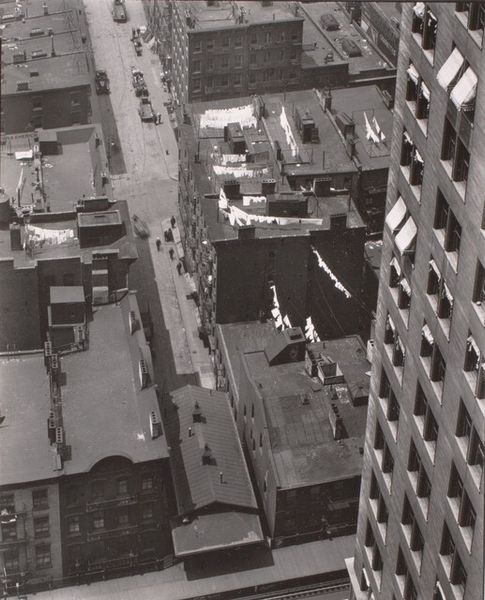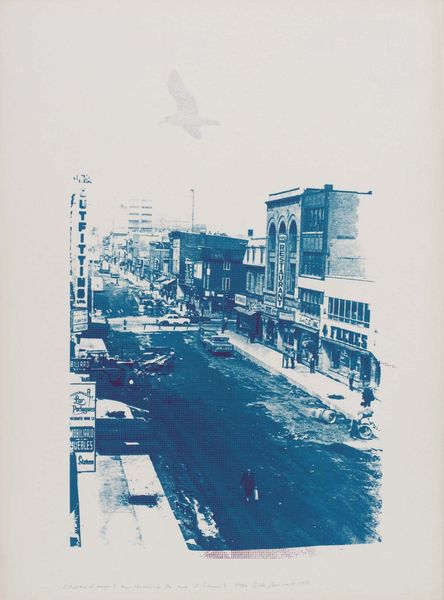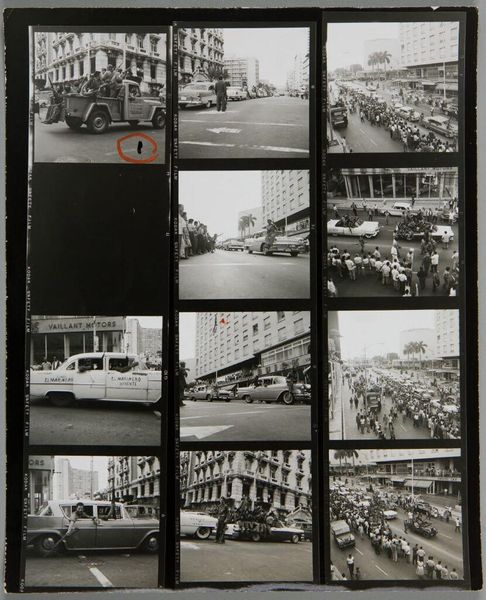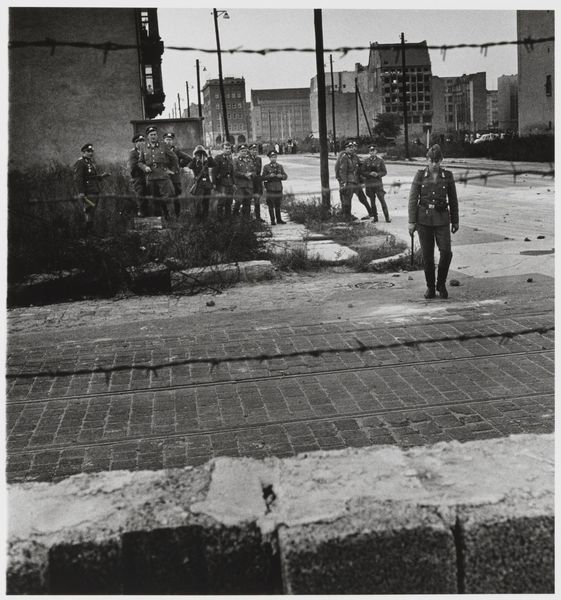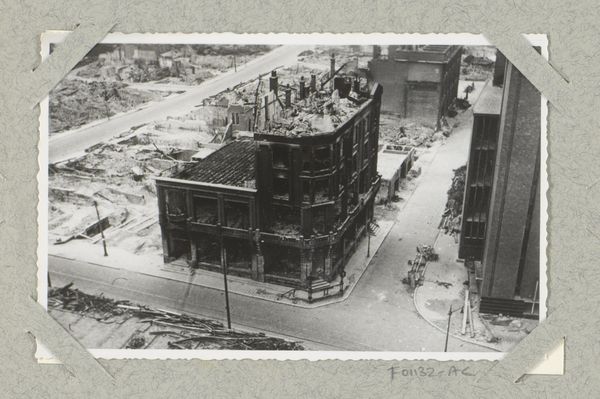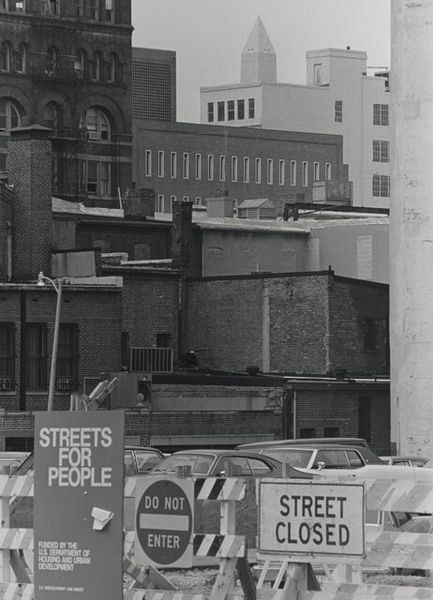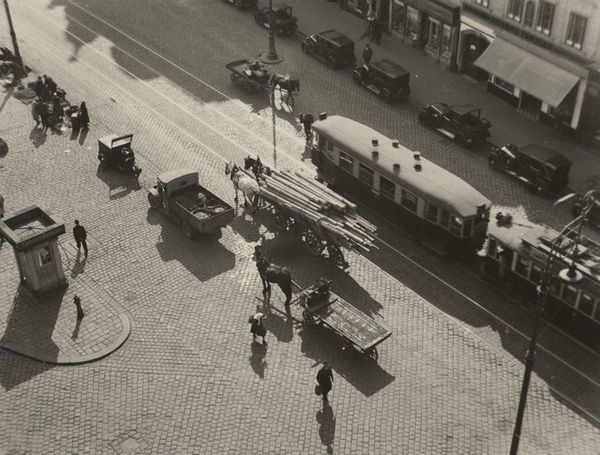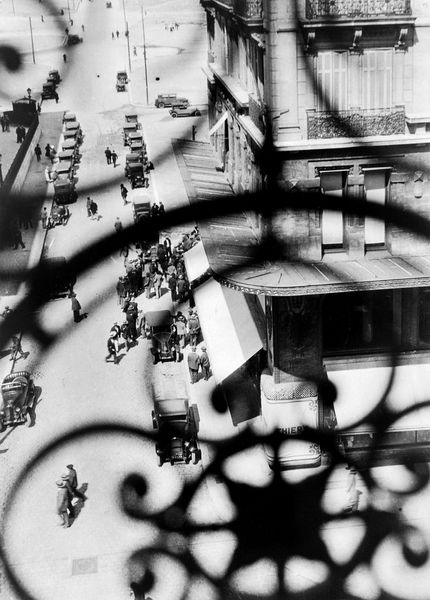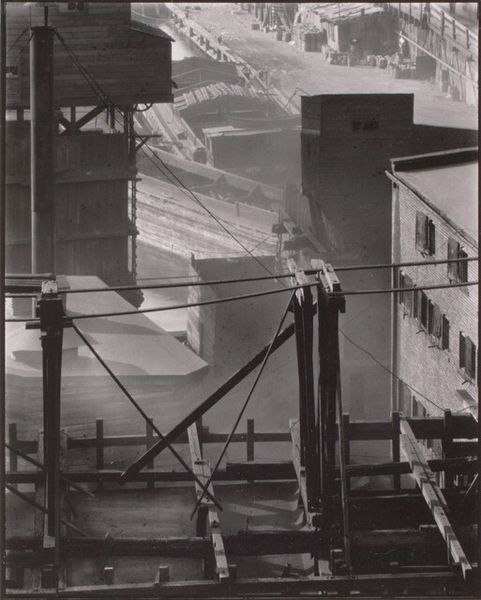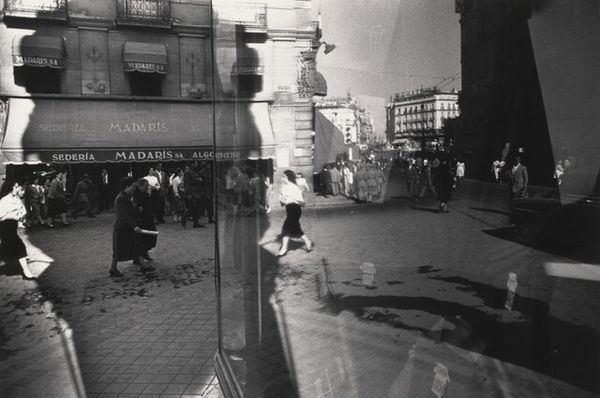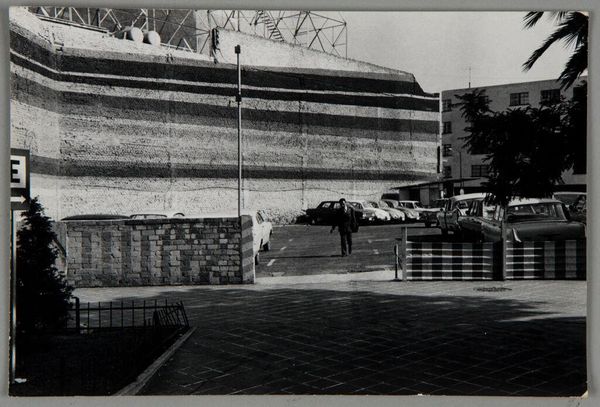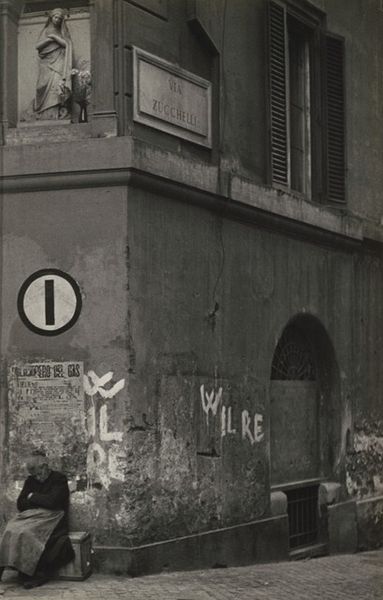
photography
#
portrait
#
black and white photography
#
street shot
#
street-photography
#
photography
#
black and white
#
monochrome photography
#
street photography
#
cityscape
#
monochrome
#
realism
#
historical building
Dimensions: image: 26.25 × 39 cm (10 5/16 × 15 3/8 in.) sheet: 35.56 × 43.18 cm (14 × 17 in.)
Copyright: National Gallery of Art: CC0 1.0
Editor: So, this photograph is titled "Old Greens Hotel, Peshawar, Pakistan" by Ed Grazda, taken in 1982. It's a black and white street scene, and what strikes me immediately is the overwhelming density of the wires crisscrossing the composition, almost obscuring the urban life below. What draws your eye when you look at this? Curator: What captivates me is the stark visual vocabulary employed to convey the material realities of this place and time. Notice how the thick cables aren't merely an aesthetic element, but rather the infrastructure - the very means of communication and power distribution – rendered visible and almost tactile. How does this influence your perception? Editor: I suppose I hadn’t considered them that way. I was seeing the cables more as visual clutter, but now that you mention it, they speak to the way the city functions, or maybe struggles to function, through this network. The production and distribution of electricity... Curator: Exactly! Consider the labour involved in erecting those poles, stringing the lines. Then, think about the buildings – the specific construction techniques and materials accessible at the time in Peshawar. Each detail embodies choices rooted in material conditions and local economies. Can we even see a tension between old and new materials at play here? Editor: I do see how those older building are in pretty harsh condition. That sign, the "Hotel", looks so damaged and aged! How might examining this piece through a materialist lens deepen our understanding of its narrative? Curator: The peeling paint, the exposed brick – these are not merely signs of decay, but potent markers of time and use, products of both human actions and environmental factors. We begin to perceive how socio-economic realities physically shape and reshape the environment. Understanding these material relationships helps us grasp a richer context, not simply a pretty landscape. Editor: That makes me consider how my own consumption leaves an impact on things. So, focusing on materials helps connect abstract concepts to daily life. Thanks for changing my perception about this picture! Curator: Precisely. Thinking critically about art through its production and consumption encourages reflection about our world. A simple monochrome image really gets you to see what you're not paying attention to.
Comments
No comments
Be the first to comment and join the conversation on the ultimate creative platform.

